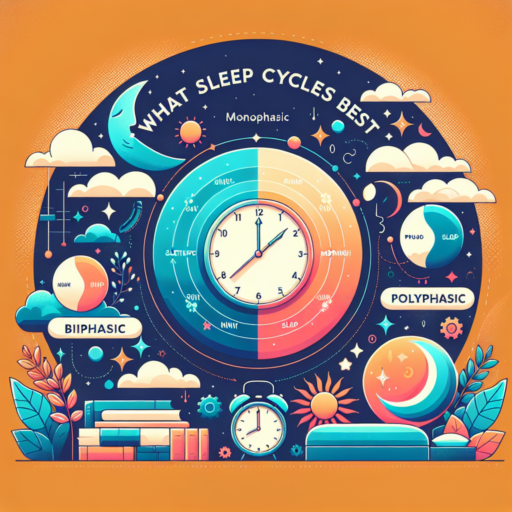No se han encontrado productos.
Which is better REM sleep or deep sleep or light sleep?
Comparing REM sleep, deep sleep, and light sleep to determine which is better requires an understanding of the unique benefits each stage offers. These distinct phases of sleep contribute collectively to our physical and mental well-being, playing crucial roles in cognitive functions, emotional regulation, and physical health restoration.
Benefits of REM Sleep
REM (Rapid Eye Movement) sleep is known for its pivotal role in emotional and cognitive processes. During REM sleep, our brains are almost as active as they are while awake, facilitating complex functions such as memory consolidation, learning, and emotional processing. This stage is crucial for resetting our mood and cognitive abilities, making it invaluable for mental health and resilience.
Importance of Deep Sleep
Deep sleep, on the other hand, is the most restorative phase, essential for physical health. It’s during this stage that the body undergoes significant repair processes, including tissue growth, muscle repair, and the release of growth hormones. Deep sleep strengthens the immune system and supports the body’s energy replenishment, highlighting its indispensable role in physical recovery and growth.
The Role of Light Sleep
Light sleep serves as a transitional phase between wakefulness and the deeper stages of sleep. Despite being the lightest stage, it holds importance for its role in promoting mental and physical relaxation. This stage helps in the gradual decrease of heart rate and respiratory rate, preparing the body for deep sleep. Additionally, light sleep enhances neurological functions by fostering neural connections, illustrating its subtle yet significant role in overall well-being.
What is a good ratio of REM to light to deep sleep?
Understanding the optimal blend of REM, light, and deep sleep stages is essential for enhancing sleep quality and overall health. Each sleep stage plays a unique role in our physical and mental recovery. While individual needs may vary, sleep experts often suggest certain guidelines to maximize the restorative effects of sleep.
Proportional Distribution of Sleep Stages
The ideal sleep cycle includes a balanced distribution of REM, light, and deep sleep. Typically, light sleep accounts for 50-60% of total sleep, serving as a transition phase between wakefulness and deeper sleep stages. Deep sleep, crucial for physical restoration, should constitute approximately 20-25% of the night. Lastly, REM sleep, integral for cognitive functions like learning and memory, is expected to make up about 20-25% of sleep.
Optimizing Your Sleep Ratio
To achieve a healthy sleep ratio, paying attention to sleep hygiene and lifestyle factors is necessary. Limiting screen time before bed, maintaining a consistent sleep schedule, and ensuring a comfortable sleep environment can significantly impact the proportion of each sleep stage. Emphasizing routines that promote relaxation can also enhance the quality of REM and deep sleep phases, leading to a more balanced sleep cycle.
What are the 5 stages of sleep?
Understanding the 5 stages of sleep is crucial for appreciating how our bodies rest and recover. These stages are part of a cycle our brain and body go through each night, and each has its distinct characteristics and importance for our overall health.
The first four stages are part of non-REM (Rapid Eye Movement) sleep, each deeper than the last. The fifth stage, known as REM sleep, is where most dreaming occurs. Throughout the night, our bodies cycle through these stages multiple times, with each cycle lasting about 90 to 110 minutes.
In the early phases of non-REM sleep, we transition from wakefulness into sleep, our heart rates slow, and our body temperatures drop. As we move into deeper non-REM stages, our bodies enter a state of significant physical recovery and rebuilding. Finally, REM sleep plays a key role in emotional and mental health, consolidating memories and learning. Understanding these stages helps individuals and healthcare professionals alike optimize sleep for health and well-being.
What type of sleep is best?
Understanding the best type of sleep requires diving into the complexities of sleep cycles and patterns. Essentially, sleep can be broken down into two major types: Rapid Eye Movement (REM) sleep and Non-REM (NREM) sleep. Each plays a vital role in ensuring a refreshing and rejuvenating rest. While it’s not about choosing one over the other, striking the right balance between REM and NREM sleep stages is critical for optimal health and well-being.
NREM sleep makes up about 75-80% of a typical night’s sleep and is divided into three stages: N1, N2, and N3. It is during the deepest stage, N3, also known as slow-wave sleep, that the body repairs and regrows tissues, builds bone and muscle, and strengthens the immune system. On the other hand, REM sleep, which accounts for the remaining 20-25% of the night, is where most dreaming occurs. This stage is crucial for processing emotions, consolidating memories, and facilitating learning and creativity.
The best type of sleep, therefore, is a balanced mix of deep NREM stages and sufficient REM phases. Achieving a harmonious progression through the sleep cycle can enhance cognitive function, emotional regulation, and physical health. Prioritizing sleep hygiene practices such as maintaining a consistent sleep schedule, creating a restful environment, and limiting exposure to screens before bedtime can promote a more effective sleep cycle tailored to individual needs.




